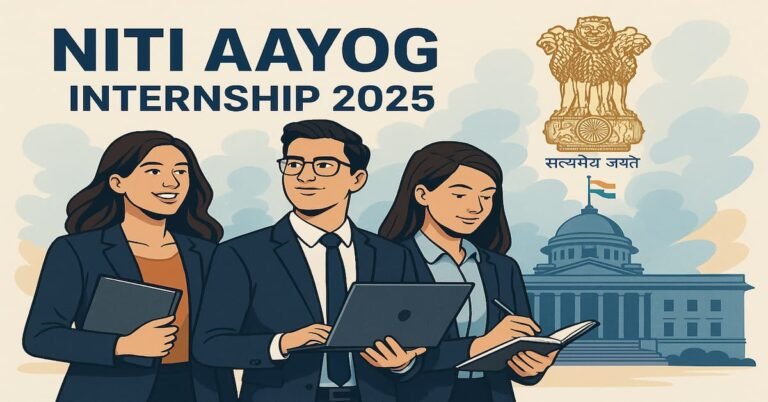Landing a data science internship in 2025 is highly competitive, with thousands of students and career switchers aiming for roles in top companies like Google, Microsoft, Amazon, and Deloitte. If you’re preparing for upcoming interviews, knowing the right type of questions—technical, logical, and situational—is critical.
This complete guide on Data Science Internship Interview Prep 2025 covers real-world questions, interview formats, and what companies expect from interns. Whether you’re applying for remote roles, startup gigs, or MNC internships, this will help you walk into your interview with confidence.
What to Expect in a Data Science Internship Interview in 2025
Companies hiring data science interns in 2025 are looking for:
- Strong grasp of data fundamentals
- Ability to apply ML concepts
- Logical thinking and problem-solving
- Awareness of project workflow
- Communication and team collaboration skills
Internship interviews usually follow this structure:
- Aptitude or Logic Test (online)
- Technical Interview (ML/Stats/Programming)
- Case Study or Take-Home Assignment
- HR/Situational Interview
Top Technical Questions: Machine Learning & Statistics
These are the most frequently asked topics in internship rounds for data roles:
📘 Machine Learning Basics
- What is overfitting and how can you prevent it?
Overfitting happens when a model learns noise instead of pattern. Prevent with regularization (L1/L2), cross-validation, or pruning (in trees). - Difference between classification and regression?
Classification predicts categories (Yes/No), while regression predicts continuous values (e.g., price, temperature). - Explain bias-variance tradeoff.
Bias is error from wrong assumptions. Variance is error from model sensitivity. Goal: balance both to reduce total error. - What’s the difference between bagging and boosting?
Bagging reduces variance using parallel models (e.g., Random Forest). Boosting reduces bias sequentially (e.g., XGBoost). - Which ML algorithm would you choose for fraud detection and why?
Usually, classification algorithms like Logistic Regression, Random Forest, or XGBoost—depending on data balance and interpretability.
📊 Statistics & Probability
- Central Limit Theorem – Why is it important?
CLT states that sampling distributions tend to be normal, allowing us to use statistical inference. - What is p-value?
Probability of observing results as extreme as the current one, assuming the null hypothesis is true. - Difference between Type I and Type II errors?
Type I: False positive (rejecting a true null). Type II: False negative (accepting a false null). - What is correlation vs causation?
Correlation is mutual relationship; causation means one event causes the other.
Logical Reasoning & Problem-Solving Questions
These are often asked to assess your thinking approach, especially in product/startup interviews.
- You’re given 100 TB of data that doesn’t fit in memory. How would you process it?
Talk about chunking, distributed processing (e.g., Spark), or batch pipelines. - If 3% of people in a population have a disease, and a test is 95% accurate, what’s the probability a person has the disease given a positive result?
Use Bayes’ Theorem to calculate. Interviewer is checking for probabilistic thinking. - Estimate how many Uber rides happen in India each day.
Fermi estimation. Break into components: population × smartphone users × app users × average rides per user. - If you had to reduce the load time of a dashboard, what would you do?
Preload data, simplify queries, cache repeated calls, or redesign visuals to show only critical KPIs.
Real Situational & Behavioral Interview Questions
These determine cultural fit, ownership, and soft skills:
- Describe a time when you handled a data quality issue in a project.
Share a STAR (Situation-Task-Action-Result) story: how you spotted the issue, what tools you used (Excel, SQL, Python), and how you resolved it. - How do you explain complex data results to a non-technical stakeholder?
Use analogies, visual aids (charts), and business-focused summaries. - What would you do if you were assigned a project in a tech you’re unfamiliar with?
Emphasize a learning mindset: ask for mentorship, start with tutorials, break the task into manageable parts. - What excites you about data science?
Talk about solving real-world problems, decision-making through data, or deriving patterns from chaos.
Bonus: Take-Home Assignment Types in 2025
Many internships now include take-home assessments. Expect these types:
- EDA Report: Clean a dataset, visualize key trends, and summarize findings.
- Model Building: Build and evaluate an ML model with metrics and visualizations.
- Dashboard: Use Power BI or Tableau to create a sales or customer retention dashboard.
- SQL Challenges: Queries involving JOINs, aggregations, and nested logic.
💡 Tip: Always document your thought process in Jupyter Notebook or README.md. Recruiters assess clarity, not just code.
Top Resources for Interview Prep
- Kaggle Interview Questions
- Glassdoor Data Science Intern Reviews
- LeetCode – Data Science Section
- Analytics Vidhya
- GitHub Interview Repos
Final Thoughts
The best way to prepare for a Data Science Internship Interview in 2025 is to combine theory with hands-on experience. Don’t just memorize definitions—practice explaining and applying them in real-world contexts.
Remember: companies don’t expect interns to be experts—but they do expect clarity of thought, curiosity, and the ability to learn fast. Start with mock interviews, review your past projects, and walk into every round as if you’re already on the team.

